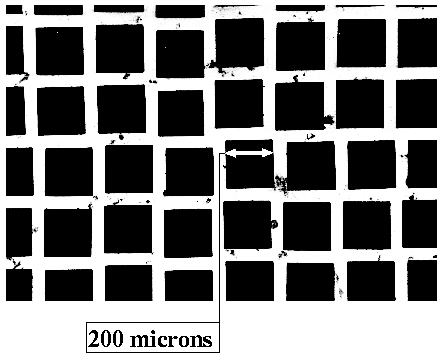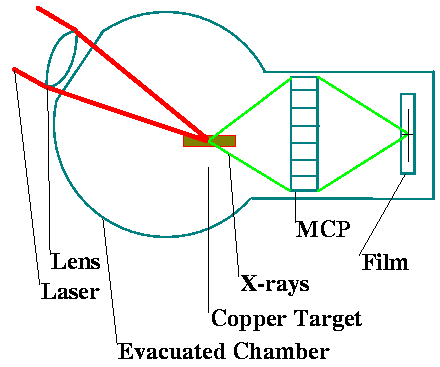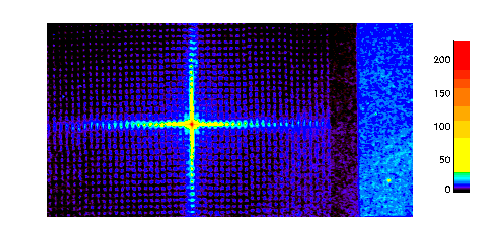| |
|
|
 |
 |
|
|
||||||
|
||||||
The lobster eye consists of square channels arranged into a spherical array. Light reflecting down the channels forms a cross shaped image. The geometry behind the reflections is shown below.

The principle behind lobster eye reflections
In order to apply lobster eye optics to some x-ray applications, we must make a spherically curved array of square channels. It is also convenient if the size of individual channels is small.
Microchannel plates (MCP's) typically consist of an array of small circular channels. Using the same technology, square channel MCP's are now being made with channel sizes down to 10 microns.

Square channel MCP
In the lobster eye geometry it is possible to arrange for the x-ray reflections to occur at very small angles. At these angles the reflectivity is high so less incident flux is lost.
The intensity in the central region of the cross can be thousands of times greater than that of the incident x-ray flux.

Theoretical intensity distribution in the focal plane of an MCP
Any application which will benefit from an increase in x-ray intensity in a small area could potentially benefit from using a lobster eye arrangement.
At the University of Melbourne we have been testing MCP's and comparing their performance with theoretical predictions.
A typical experimental arrangement uses a point source of x-rays, for instance, from a laser produced plasma.

An intense laser pulse is focused onto a target. The resulting plasma is a strong emitter of x-rays which are then focused through the MCP onto film.

Focal plane intensity for a 200 micron pore MCP
The best results to date show the focused intensity to be about one third of that for a perfect MCP. When we incorporate realistic geometric deformation parameters and other performance reducing factors, such as surface roughness, into our theory we obtain excellent agreement between the experiment and theory - see the image below.

We are currently undertaking research towards incorporating MCP's into a working lobster eye device - the Lobster Eye Telescope. This is part of an Australia/US/UK collaboration. A set of printed material describing some of aspects of this work can be previewed and/or downloaded at the Lobster Eye Satellite Documents Package.
There have been accesses to this page since July 18, 1995.
| |
Return to Optics Group home page
|
| |
Return to School of Physics home page |